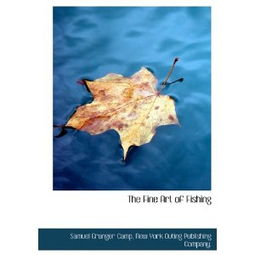Content:
Fishing, an age-old pastime, offers a serene escape from the hustle and bustle of daily life. For many, the thrill of reeling in a catch is unparalleled. However, to make the most of your fishing adventures, it's essential to master the art of baiting. The right bait can make all the difference between a fruitful day on the water and a frustrating one. In this article, we delve into the essential techniques for choosing and using the perfect bait to help you圆梦钓鱼 (fulfill your fishing dreams).
Understanding the Fish
Before you can effectively lure fish, it's crucial to understand their preferences. Different species have varying diets and preferences, which should guide your choice of bait. Here are some common types of fish and their preferred baits:
Trout: These freshwater fish are often attracted to natural baits like worms, maggots, and small insects. Artificial lures like spinners and flies can also be effective.
Bass: Bass are opportunistic feeders and can be enticed with a variety of baits, including live bait like worms, crayfish, and minnows, as well as artificial lures like crankbaits, jigs, and soft plastics.
Carp: Carp are bottom feeders and are typically attracted to bread, corn, and boilies. They can also be caught on live bait like worms and maggots.

Salmon: Salmon are powerful predators and can be caught on a variety of baits, including live bait like herring and mackerel, as well as artificial lures like flies and spoons.
Choosing the Right Bait
Once you've identified the fish you're targeting, the next step is to choose the right bait. Here are some factors to consider:
Freshness: Fresh bait is more appealing to fish. If you're using live bait, ensure it's lively and healthy. For artificial baits, make sure they are in good condition and free from damage.
Season: The season can significantly impact fish behavior. In spring, fish are often more active and may be more likely to bite. In winter, they may be less active and require more subtle presentations.
Water Conditions: The clarity and temperature of the water can influence fish behavior. In clear water, fish may be more cautious, requiring more natural-looking baits. In colder water, fish may be slower, requiring slower presentations.
How to Present the Bait
Once you've chosen the right bait, the next step is to present it effectively. Here are some tips:
Natural Movement: Fish are often attracted to movement. Whether you're using live bait or artificial lures, try to mimic the natural movement of the prey you're trying to imitate.
Patience: Be patient and allow the bait to settle naturally. Rushing the presentation can be counterproductive.
Adjustments: Be prepared to make adjustments based on the fish's response. If they're not biting, try changing your bait, speed, or depth.
Techniques for Specific Baits
Here are some specific techniques for popular types of bait:
Worms: Thread the worm onto your hook and let it fall naturally to the bottom. Wiggle the worm to mimic the movement of a struggling worm.
Maggots: Use a small piece of maggot on the hook and let it sink to the bottom. Gently twitch the bait to mimic the movement of a struggling maggot.
Crankbaits: Work the crankbait through the water by retrieving it with a steady, consistent motion. Vary the speed and retrieve to mimic different prey.
Soft Plastics: Rig the soft plastic on a straight shank hook and work it through the water with a variety of retrieves, such as the Texas rig, Carolina rig, or dropshot.
Conclusion
Mastering the art of baiting is a skill that takes time and practice to develop. By understanding the preferences of the fish you're targeting, choosing the right bait, and presenting it effectively, you'll be well on your way to catching more fish and enjoying your fishing adventures to the fullest. So, get out there, experiment with different baits and techniques, and remember that the perfect bait is one that matches the fish's natural diet and movements. Happy fishing!












